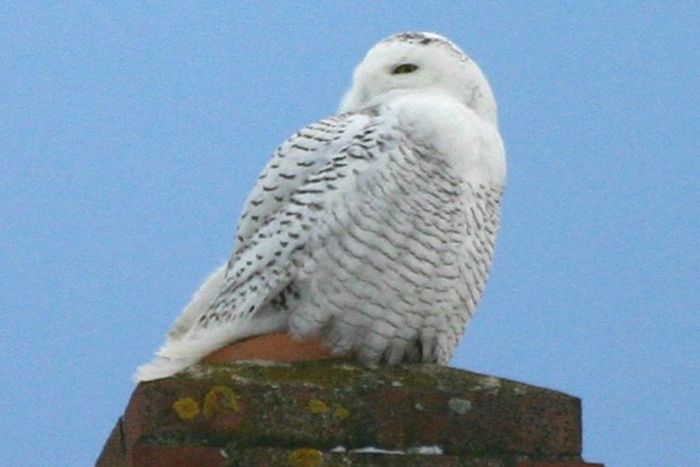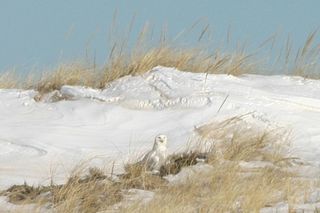
A Snowy Winter: Northern Owls Spread as Far South as Texas (Op-Ed)

Jake Kritzer is a senior scientist at Environmental Defense Fund. He contributed this article to LiveScience's Expert Voices: Op-Ed & Insights.
Birdlife is inextricably woven into the tapestry of coastal ecosystems. Fishermen, naturalists, boaters and others who love time on or near the ocean are often accompanied by a wide array of feathered friends. Ospreys and eagles dive for river herring and other types of fish. Herons and egrets stalk fish and crabs amidst saltmarshes. Terns and plovers nest and hover over rolling dunes. Oystercatchers and sandpipers pluck small invertebrates from the sand in the surf zone. And the ubiquitous herring gull co-mingles with all of them.
This winter, an additional species is surprisingly common among the avifauna of the eastern seaboard: the snowy owl. These large, stout raptors breed in the summertime across the Arctic tundra spanning North America and Eurasia. During wintertime, their range often expands southward into the northern areas of the lower 48 states. However, the winter before us is seeing an especially large 'irruption' of snowy owls: an episodic boom in which the birds are distributed more widely and in much greater numbers.

Sightings have been reported as far south as the Chesapeake Bay, the Carolinas and even Texas. Snowy owl irruption hotspots are concentrated along the coast of New England, including places such as Biddeford Pool near the Rachel Carson National Wildlife Refuge in Maine and Plum Island within the Parker River National Wildlife Refuge in Massachusetts. During a visit to Biddeford shortly after Christmas, I saw a pair of snowy owls perched atop quiet summer homes.
In the Arctic, the dominant prey of snowy owls is lemmings, small rodents closely related to voles and muskrats. One might guess that the owls push further south in search of other types of prey when lemmings are in short supply. That is partly true, although the range expansion seems to be due less to a scarcity of lemmings and due more to an abundance of owls. In fact, boom years in the owl population often follow boom years for lemmings, which allow the owls to enjoy high reproductive success. The much larger owl population might then find that an otherwise healthy lemming population still does not provide enough food. So, the owls venture south and those of us living below the Arctic Circle get a midwinter birdwatching treat!

During these irruptions into the lower 48, snowy owls seek habitats that mimic tundra — that means open expanses such as dunes, marshlands, agricultural fields and even airports. Suitable habitats are not found exclusively near the ocean, and snowy owls are therefore not tied to the coast. However, many of the snowy owl irruption hotspots are in the coastal zone. This might be due to a more diverse menu of prey. Many of the species hunted by snowy owls during their southern expansion are found both inland and along the coast, including rabbits, squirrels, mice, muskrats, ducks and geese. But the owls also feed on fish and shorebirds, both of which are much more abundant at the ocean's edge. Snowy owls are also known to snatch prey right off the surface of the water, so the ocean represents a substantial extension of open foraging habitat beyond beaches, dunes and marshes.
As a species that is generally restricted to very cold, remote and undeveloped regions, with only intermittent incursions into areas with larger human populations, many questions about what drives snowy owl irruptions remain unanswered. The interplay between owl and lemming populations seems to be complex and is actually not well understood. When irruptions do occur, the importance of different prey species in southern areas has not been illuminated. Climate effects on snowy owl habitat and prey might be a concern in the future as atmospheric CO2 levels and global temperatures continue to rise. Though for now, the snowy owl population seems to be fairly healthy, having benefited from the protections offered by the Migratory Bird Treaty Act. That means we Americans hopefully have continued opportunities to study — and enjoy — this unique natural phenomenon.
Sign up for the Live Science daily newsletter now
Get the world’s most fascinating discoveries delivered straight to your inbox.
The views expressed are those of the author and do not necessarily reflect the views of the publisher. This version of the article was originally published on LiveScience.












